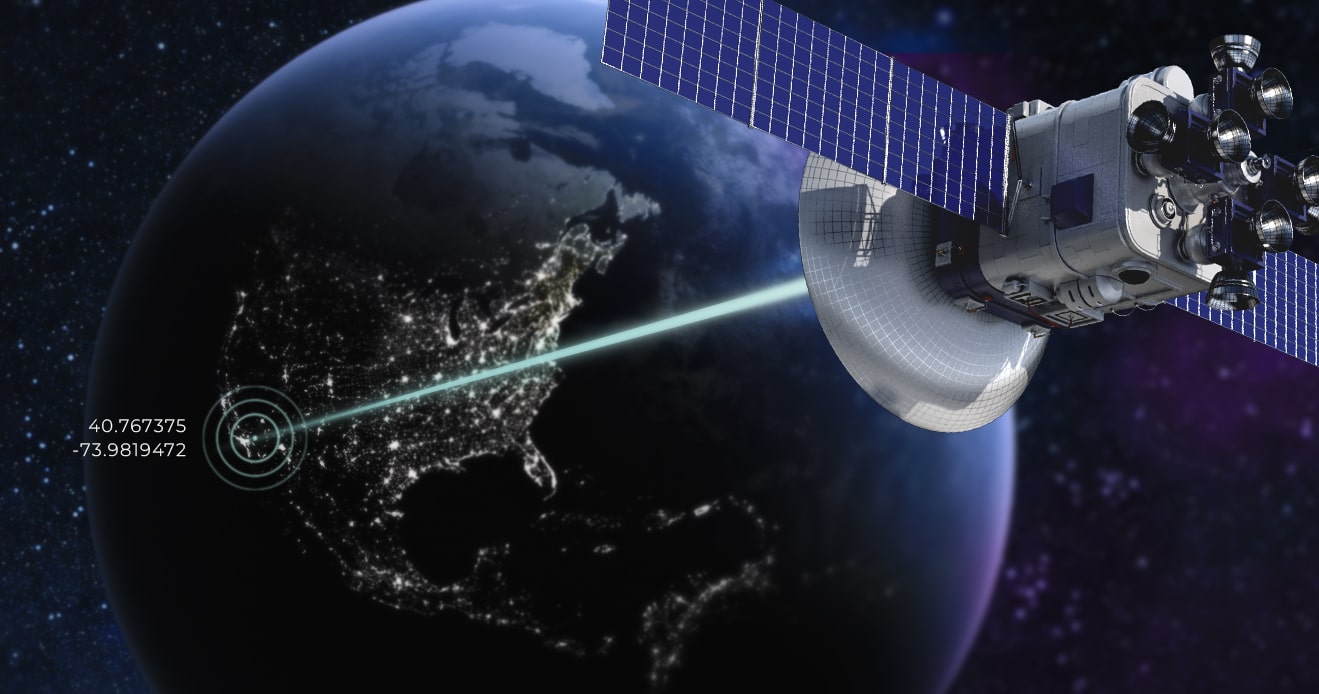- Blog
- GPS verification: how is GPS used in security?
GPS verification: how is GPS used in security?
In today's digital age, security isn't just about locks and keys—it's about satellites and signals too. Learn how GPS verification and authentication bolster our defenses against unauthorized access and help us discern genuine user behavior from fraudulent activity.
Subscribe to Incognia’s content
In our increasingly connected world, the Global Positioning System (GPS) has become a technological cornerstone.
But what exactly is GPS? Originally designed for military use, it's a satellite-based navigation system that offers geolocation and time information to receivers anywhere on Earth.
Today, GPS's role extends far beyond basic navigation; it's a component in online security systems, notably through GPS verification and authentication. By verifying the geographic location of devices, GPS adds an extra layer of protection against fraud, making it an unsung hero in safeguarding digital life.
But how does GPS, a system originally intended to guide sailors and soldiers, become a formidable tool in modern-day fraud prevention and cybersecurity? It's all about location. GPS verification– used to validate the physical location of a user or device–adds a robust layer to multi-factor authentication protocols and offers a practical solution to the burgeoning problem of cyber-fraud.
What is GPS verification?
GPS verification, simply put, is the process of validating the geographic location of a device or user using GPS technology. This process is a significant component in multi-factor authentication systems, where it acts as an additional barrier to unauthorized access.
For instance, if a user attempts to log into a secure platform from an unexpected location, the system may flag this as suspicious activity, potentially preventing fraudulent access. GPS verification can be a critical tool in enhancing security measures, as it allows for real-time, accurate, and reliable location-based authentication.
This technology not only fortifies traditional security protocols but also plays an instrumental role in fraud prevention initiatives across a range of sectors.
How is GPS Used in Security?
GPS can discern genuine user behavior from fraudulent activity based on location patterns. For example, a sudden login from a location that differs drastically from the user's typical location behavior might indicate potential fraud. GPS data, when used in conjunction with other data points, can help create robust risk assessment.
Further, GPS technology also plays a significant role in geofencing, which restricts resource access to specific locations. This can be particularly useful in corporate environments where certain data or systems need to be accessible only within the confines of an office campus. Related to this, GPS can also be used to grant access to users in approved geographic locations in a process known as GPS authentication.
What are the vulnerabilities of GPS?
While certainly a powerful security signal, GPS isn’t a magic bullet for all things Trust & Safety. It comes with some pretty significant vulnerabilities which, left unaddressed, leave the door wide open for exploitation by bad actors.
For instance, GPS relies on one system reading the location data sent to it by another system, like a mobile device, but that data isn’t infallible. In fact, transmitting a fake GPS signal from your phone simply requires downloading a GPS spoofing app from a public app store. By itself, GPS authentication is incredibly vulnerable to these spoofing attacks, and they can be carried out by bad actors with minimal technical know-how.
Another problem to consider with GPS verification is the relative lack of accuracy in most modern GPS technology. GPS can’t tell the difference between different floors in an apartment building, much less between individual units. For anyone wanting to use it as a security or fraud prevention measure, that presents a challenge. How do you block fraudsters without also blocking innocent users in the process? This lack of accuracy means that false positives are an evergreen concern when using GPS for security purposes.
With these problems in mind, it might be easy to write off GPS verification as an account security tool, but just because these problems exist doesn’t mean they can’t be addressed. GPS technology is advancing quickly, and already, there are location technology upgrades that can help fix the vulnerabilities of legacy GPS.
Where GPS verification is headed now and in the future
At Incognia, we recognize the power of location technology while also acknowledging the vulnerabilities of GPS technology alone—which is why we don’t use it in isolation. Instead, our solution combines GPS with other signals in order to create a highly-precise location signal that’s tamper-resistant. We leverage other nearby signals like WiFi, Bluetooth, and cellular network to create location environments that help us see whether someone is spoofing their GPS location. Our solution allows us to block fraudster devices and locations with apartment level precision, patching the false positive problem of traditional GPS.
GPS technology fortifies security measures and plays a pivotal role in the battle against cyber fraud. Configured properly, GPS verification and authentication provide a reliable and real-time solution for validating user locations, acting as a powerful tool against unauthorized access. This location-based technology has proven to be instrumental across various sectors in fraud prevention initiatives.
However, as with any technology, it's crucial to stay aware of the potential vulnerabilities– like spoofing attacks and occasional false positives. Looking at the future, solutions like Incognia's precise location technology, which incorporates additional signals alongside GPS, are paving the way toward enhanced accuracy and tamper resistance.
In an increasingly connected world, the potential of GPS technology in bolstering security measures remains largely untapped. For more on cutting-edge location technology for fraud prevention and authentication, visit Incognia’s location technology page.




